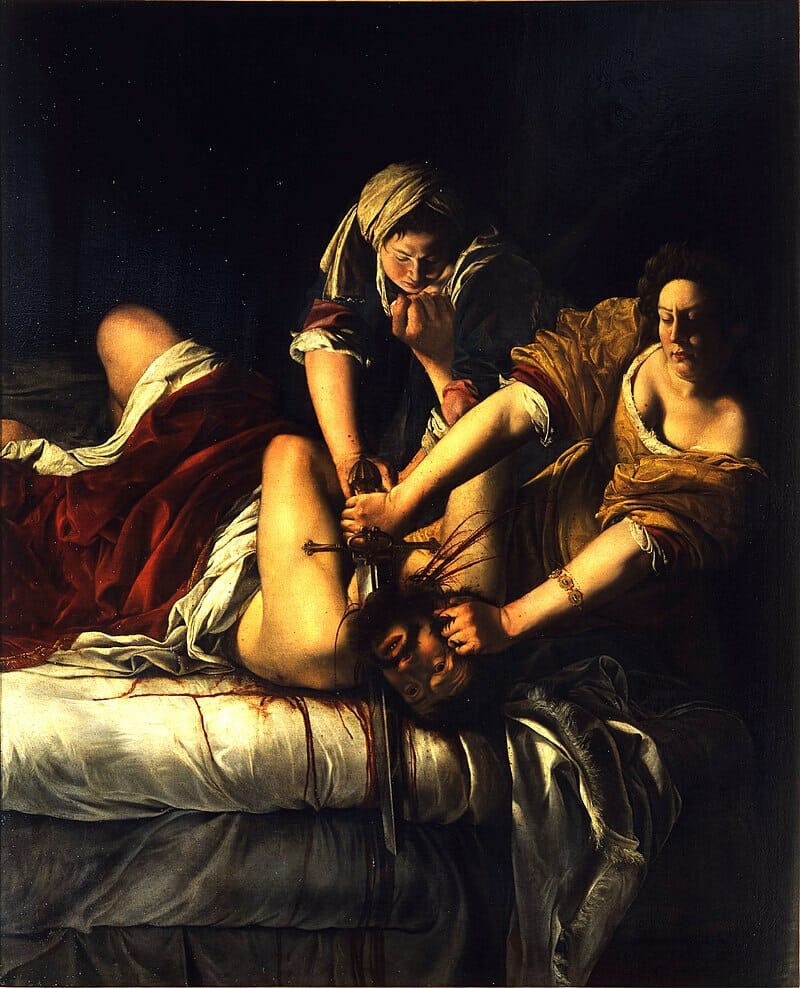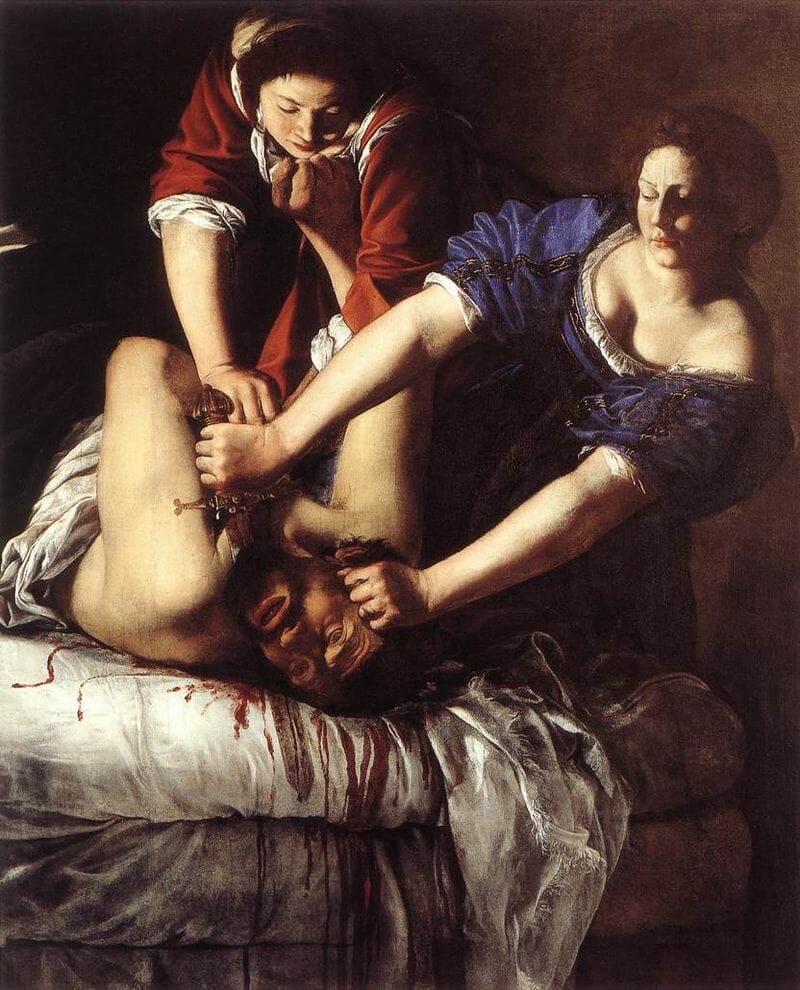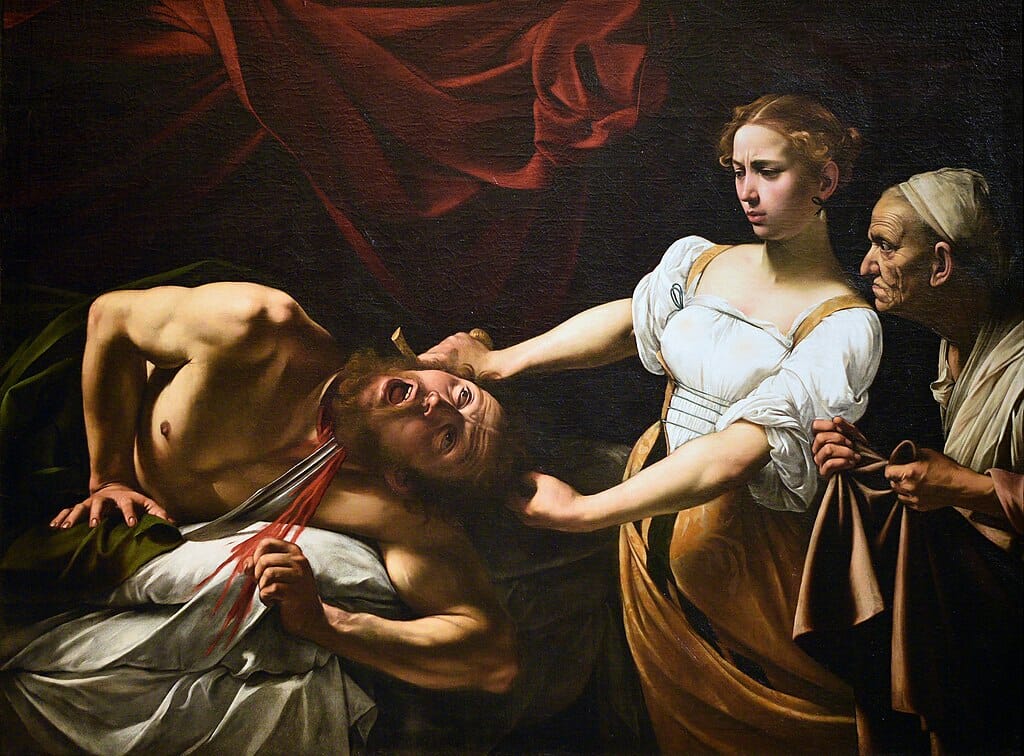
Judith Beheading Holofernes | Stories of women and revenge
Artist
Year
Country
Format
Location of the visited exhibition
Material/Technique
Dimensions
Artemisia Gentileschi, daughter of the Pisan painter Orazio Gentileschi, was a 17th-century Caravaggio-esque artist. Artemisia painted Judith Beheading Holofernes in 1620 for Cosimo II de Medici. The Grand Duke, however, was unhappy with the work because of its violent realism and so donated it to the Pitti Palace. In order to receive the agreed remuneration, Artemisia had to go through the mediation of Galileo Galilei. The work, now in the Uffizi Gallery in Florence, was the second version of Judith Beheading Holofernes painted by Artemisia. The artist in fact painted the first version of this one between 1612 and 1613, now in the Museo Nazionale di Capodimonte in Naples.

Image courtesy of Wikimedia Commons, Public Domain
The trial of Agostino Tassi
Agostino Tassi was a well-known Italian painter who collaborated with Orazio Gentileschi. The painter used to frequent the Gentileschi’s house and had won the trust of Artemisia. On 6 May 1611, Agostino raped her in his house. The girl, then 17 years old, tried to free herself and reacted by threatening him with a knife, but it was useless. Following the abuse, Tassi promised the girl a reparative marriage. At the time it was one of the few ways to save the honor of a raped woman, and Artemisia agreed not to denounce him. What the girl did not know was that Agostino was lying. So after a year of useless waiting, Orazio Gentileschi, denounced Tassi for the rape of his daughter; but the long delay between the rape and the denunciation led public opinion to believe that Artemisia, that day, was consenting.

During the trial, the girl had to undergo a gynecological examination. In addition, Artemisia was subjected to Sibyl’s torture. This consisted of tying her thumbs with strings, which, thanks to a piece of wood, became tighter and tighter around the phalanges. At the end of the trial Agostino Tassi was condemned to exile from Rome, a sentence he never served.
The emotional and psychological involvement of the trial and all the consequences of the injustices suffered are poured by Artemisia into the painting where the Jewish heroine Judith has her revenge on the unjust man who wanted to abuse her. And she does it to save her people.
Judith, the biblical heroine
In this work, Artemisia Gentileschi portrays Judith, the biblical heroine who liberated the city of Bethulia besieged by the Assyrians of King Nebuchadnezzar. The young woman was a rich and beautiful Jewish widow who, determined to save her people, went with her handmaiden to the enemy camp. When Holofernes noticed her, he invited her to stay with him at the banquet. Judith thus tricked Holofernes into getting him drunk and finally decapitated him with his scimitar. With Holofernes’ head in a basket, the two women fled.
When the Assyrians found the dead body of Holofernes, they were frightened and fled too.
Several artists paid homage to the biblical heroine over the centuries, but the first to depict Judith in the midst of the action was Caravaggio around 1599, an artist who influenced Artemisia’s style.

Image courtesy of Wikimedia Commons, Public Domain
Kill Bill, revenge is a woman
A contemporary story about a woman acting out of revenge is Kill Bill, a film written and directed by Quentin Tarantino, divided into two chapters; Kill Bill: Volume 1, a 2003 film, and Kill Bill: Volume 2, a 2004 film.
The star of the film is The Bride (Uma Thurman), also known as Black Mamba; she is a former member of the Deadly Viper Assassination Squad (DVAS). Leading the team is Bill Gunn (David Carradine), the former lover of the Bride.
What unites Artemisia, Judith and the Bride is the feeling of revenge against the man who has done them wrong. The character of the Bride for the entire duration of the film is driven by a thirst for revenge, for being betrayed, almost killed, and for losing the baby she was carrying. Her every action shows how strong, brave, and determined she is. Like a modern-day Judith, she does not remain defenseless in the face of injustice but acts by finding relief for his own pain through the all-too-human feeling of revenge.
Tag
Buy a ☕ for Hypercritic









